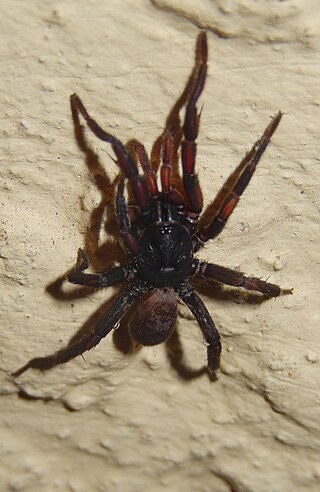Top Qs
Timeline
Chat
Perspective
Anamidae
Family of spiders From Wikipedia, the free encyclopedia
Remove ads
Anamidae is a family of Australian mygalomorph spiders. It was first described as a tribe by Simon in 1889, then raised to the subfamily Anaminae of the family Nemesiidae, before being raised to a family level by Opatova et al. in 2020.[1][2]
Remove ads
Taxonomy
The tribe Anamini was first described by Eugène Simon in 1899.[3] In 1982, Barbara York Main distinguished the tribe Teylini from the tribe Anamini by technical differences, including a narrow band of cuspules on the maxillae and the absence of a spine-bearing spur on the first tibia of males (except in Teyloides).[4] A molecular phylogenetic study in 2018 found that Anamini excluding Teylini was not monophyletic, and so merged the former Teylini into Anamini, placing the tribe in the subfamily Anaminae of the family Nemesiidae.[3] In 2020, Opatova et al. raised the group to the rank of family, including all nine genera previously placed in the Anamini.[2]
Remove ads
Genera
As of July 2020[update], the World Spider Catalog accepts the following genera.[1] A 2018 molecular phylogenetic study divided them into four informal groups.[3]
- Teyl group
- Chenistonia group
- Chenistonia Hogg, 1901
- Proshermacha Simon, 1908
- Teyloides Main, 1985
- Kwonkan group
- Aname group
- Aname L. Koch, 1873
- Hesperonatalius Castalanelli, Huey, Hillyer & Harvey, 2017
- Unplaced
- Troglodiplura Main, 1969
Remove ads
Distribution
All members of the family are native to Australia.[3]
References
Wikiwand - on
Seamless Wikipedia browsing. On steroids.
Remove ads

